Michael Rakowitz: The invisible enemy should not exist
Michael Rakowitz
the invisible enemy should not exist
January 12 - February 17, 2007
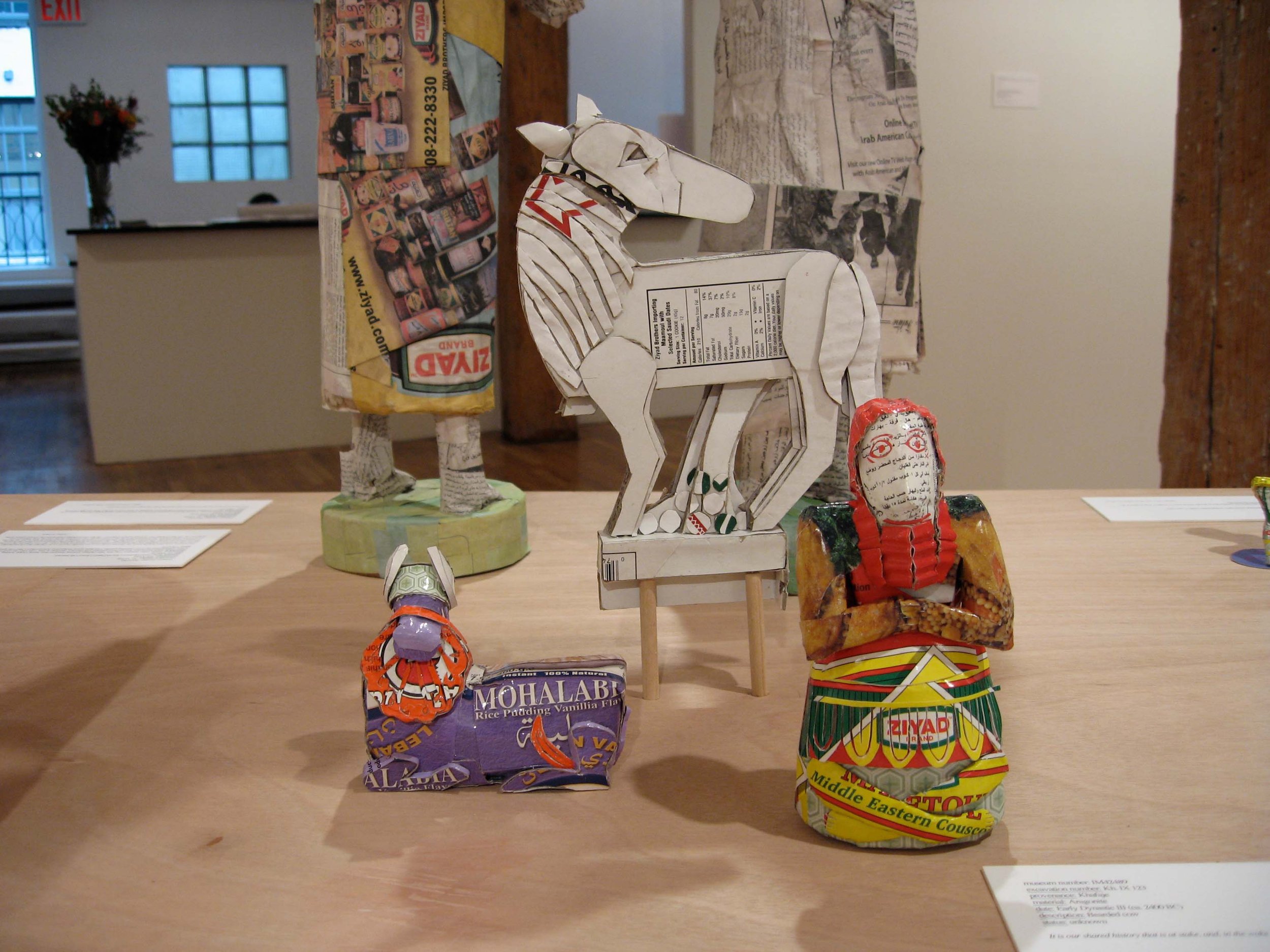
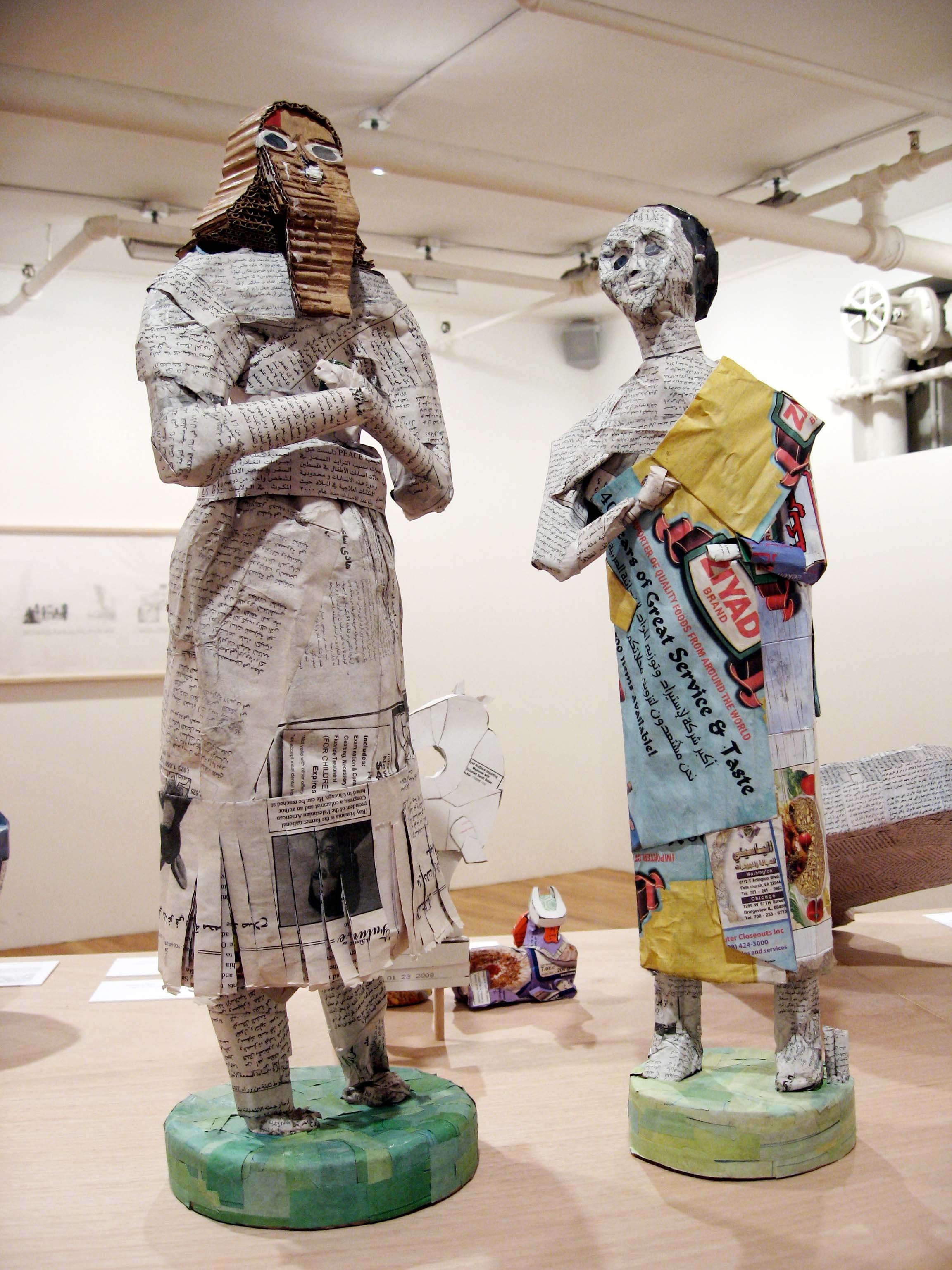
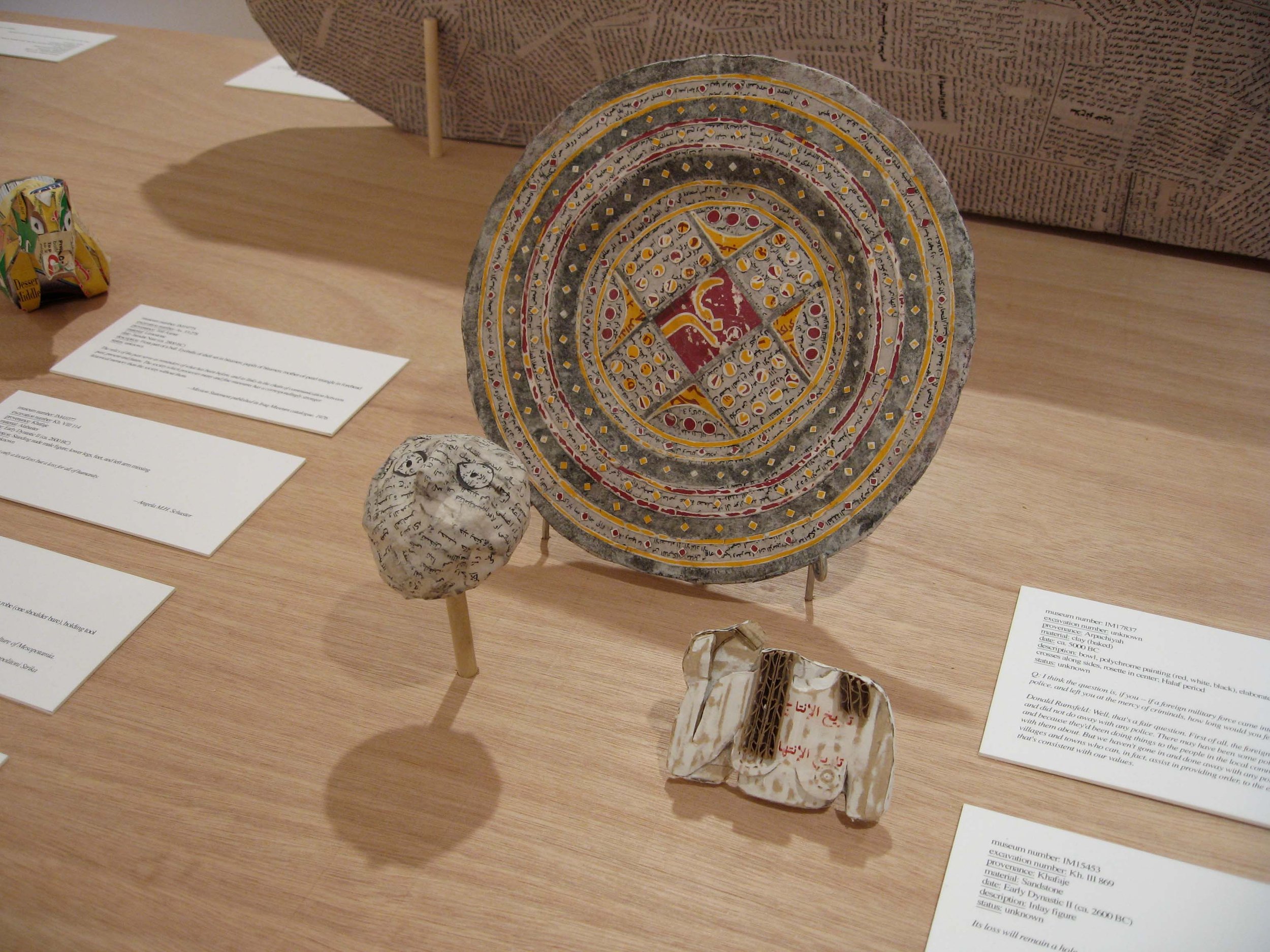
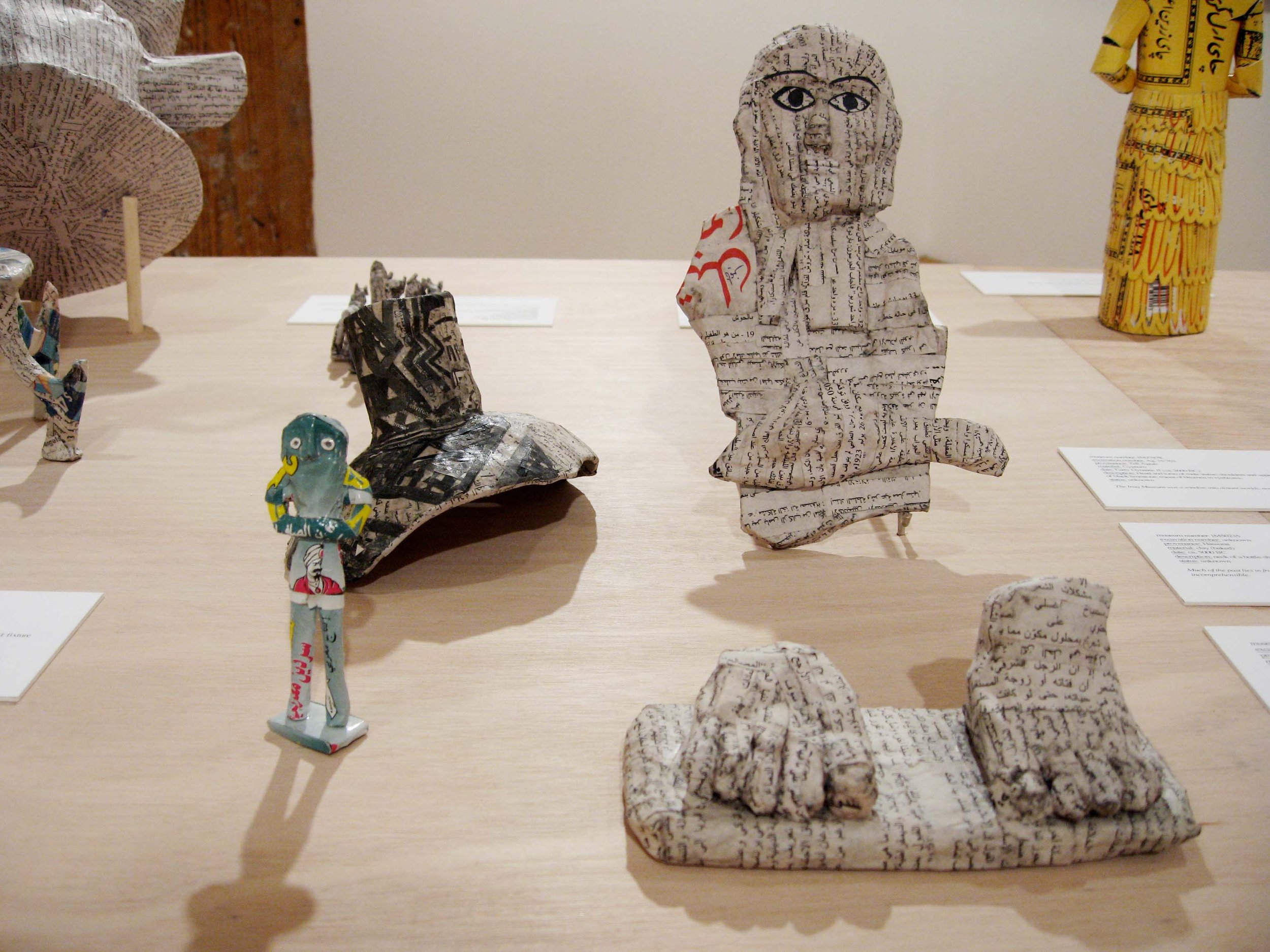
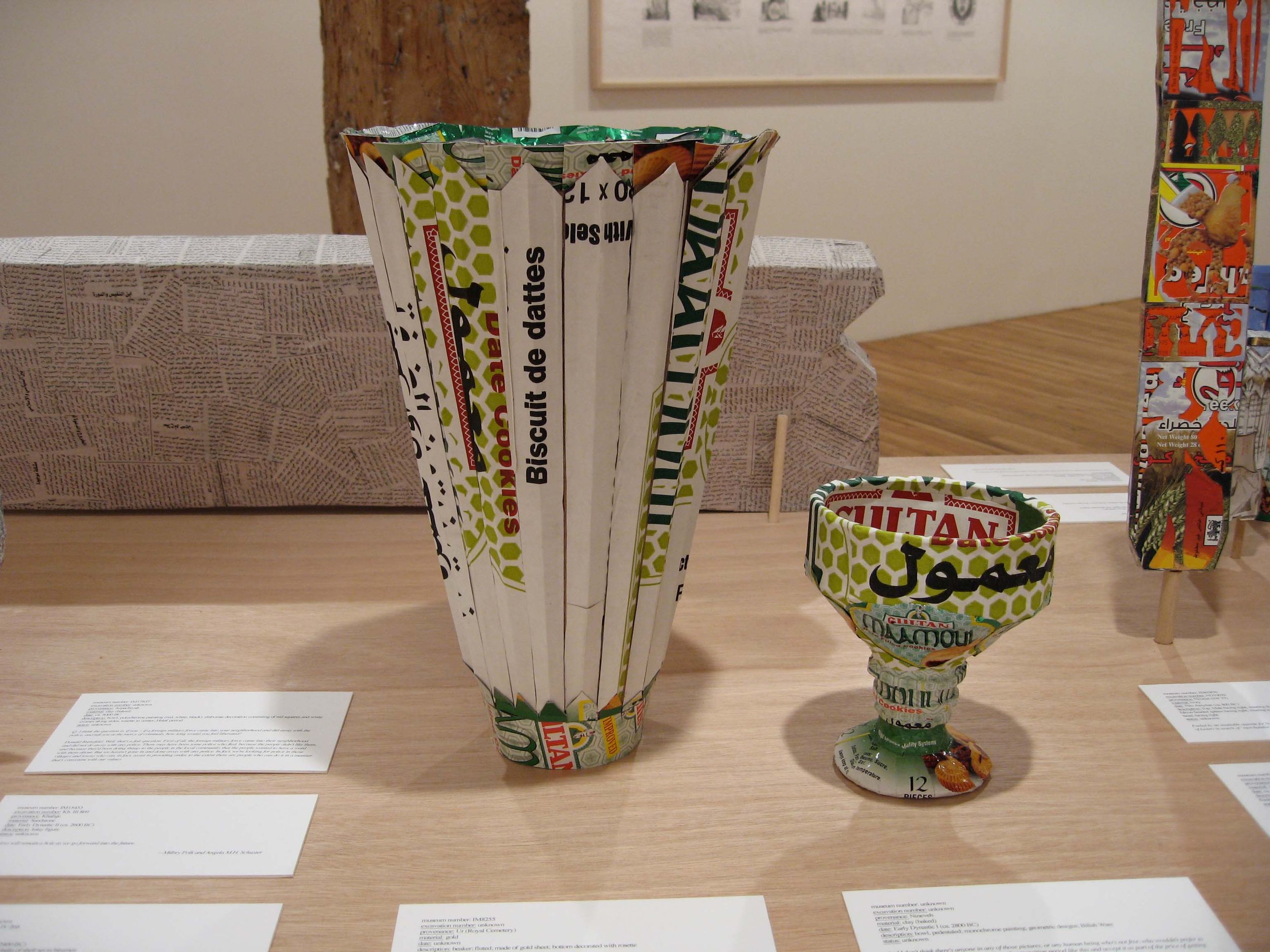
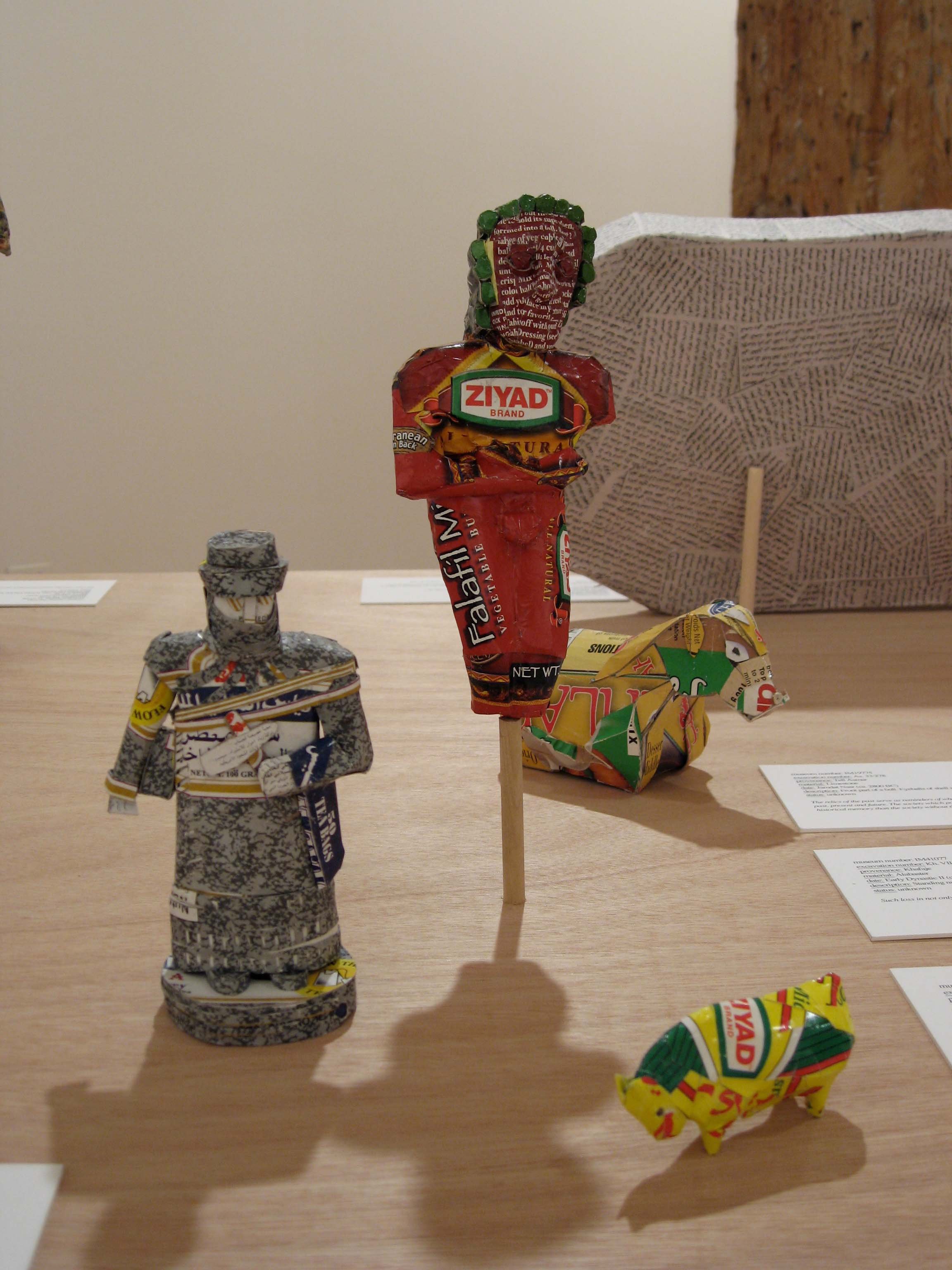
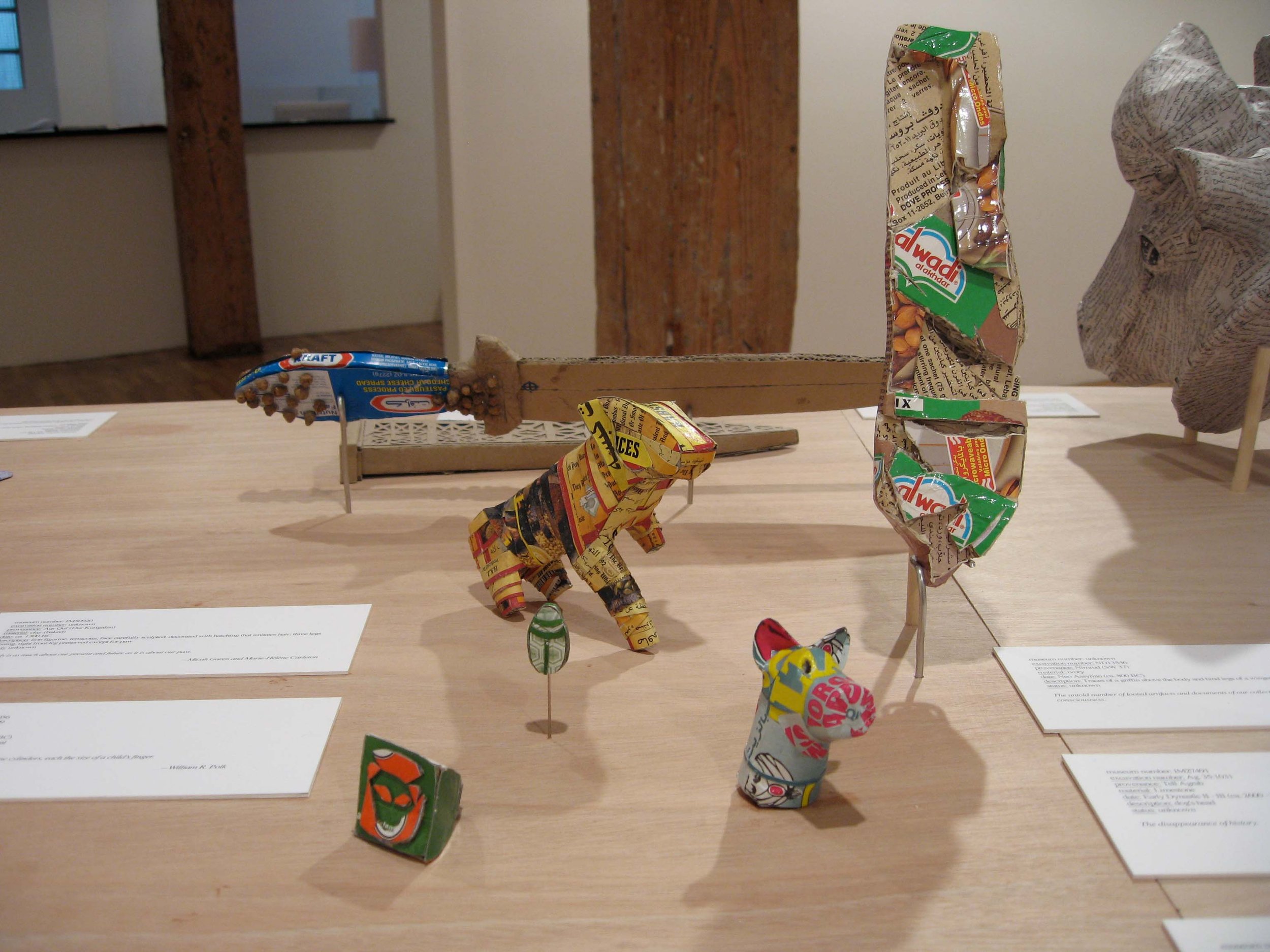

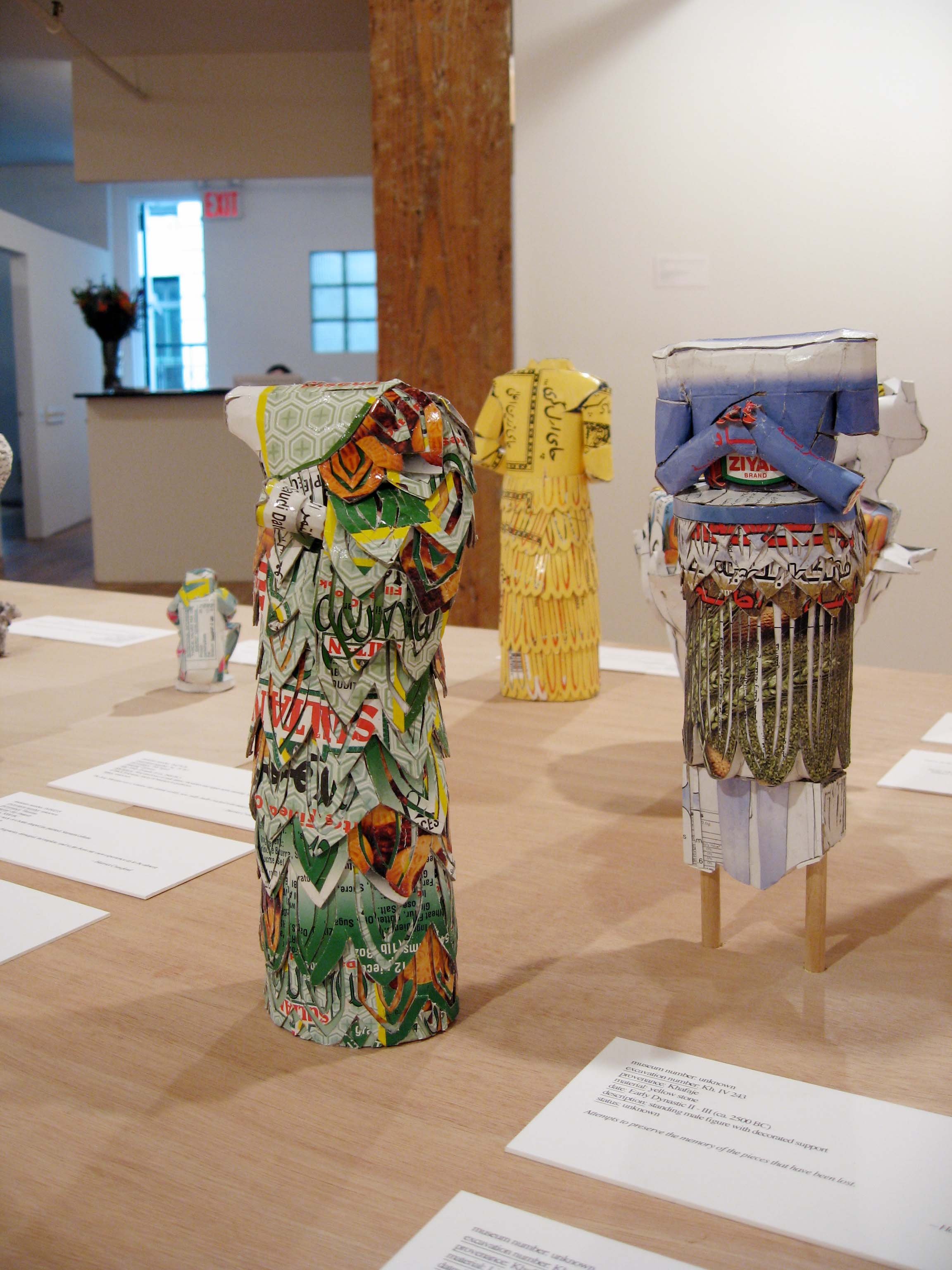
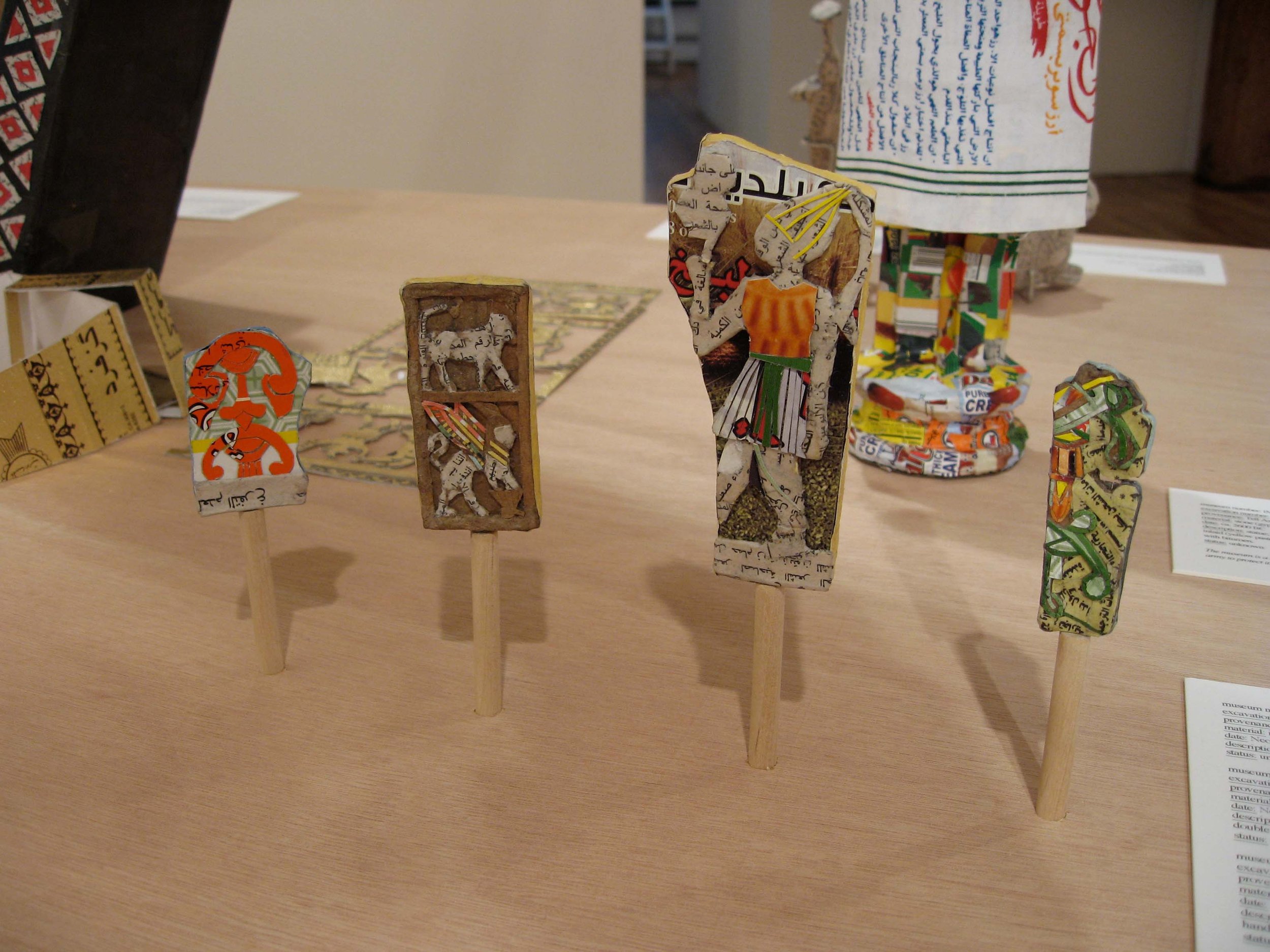
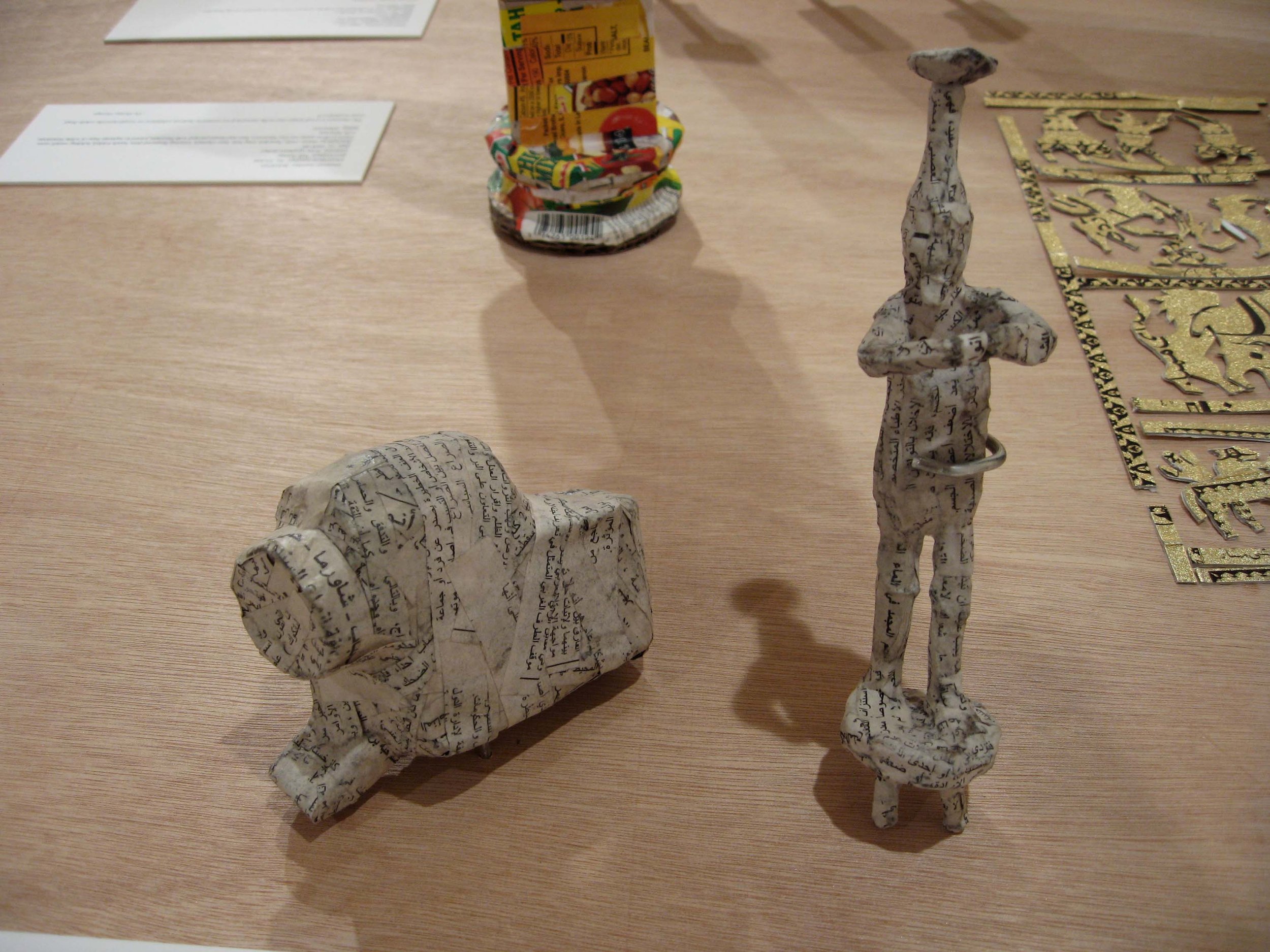
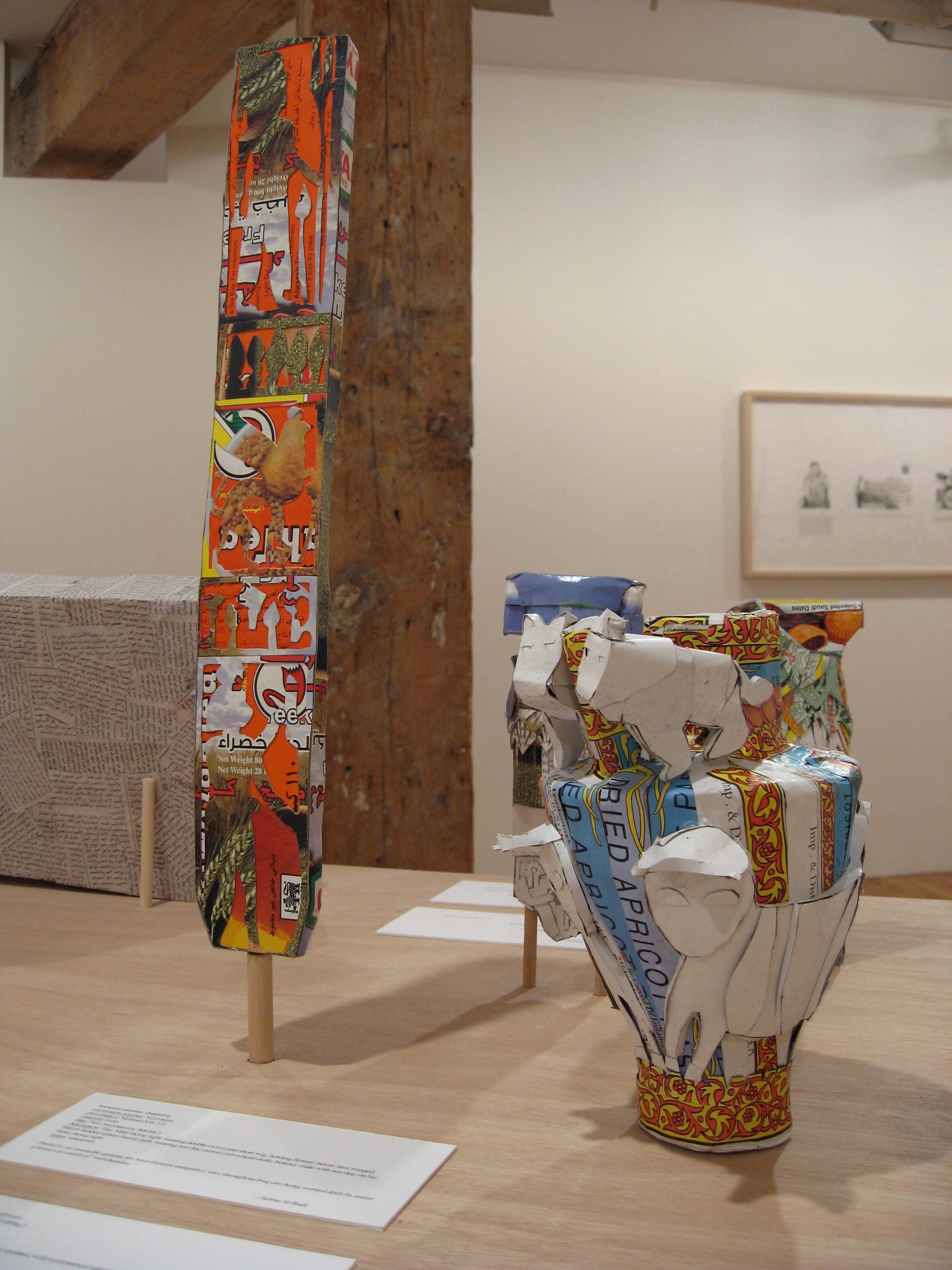
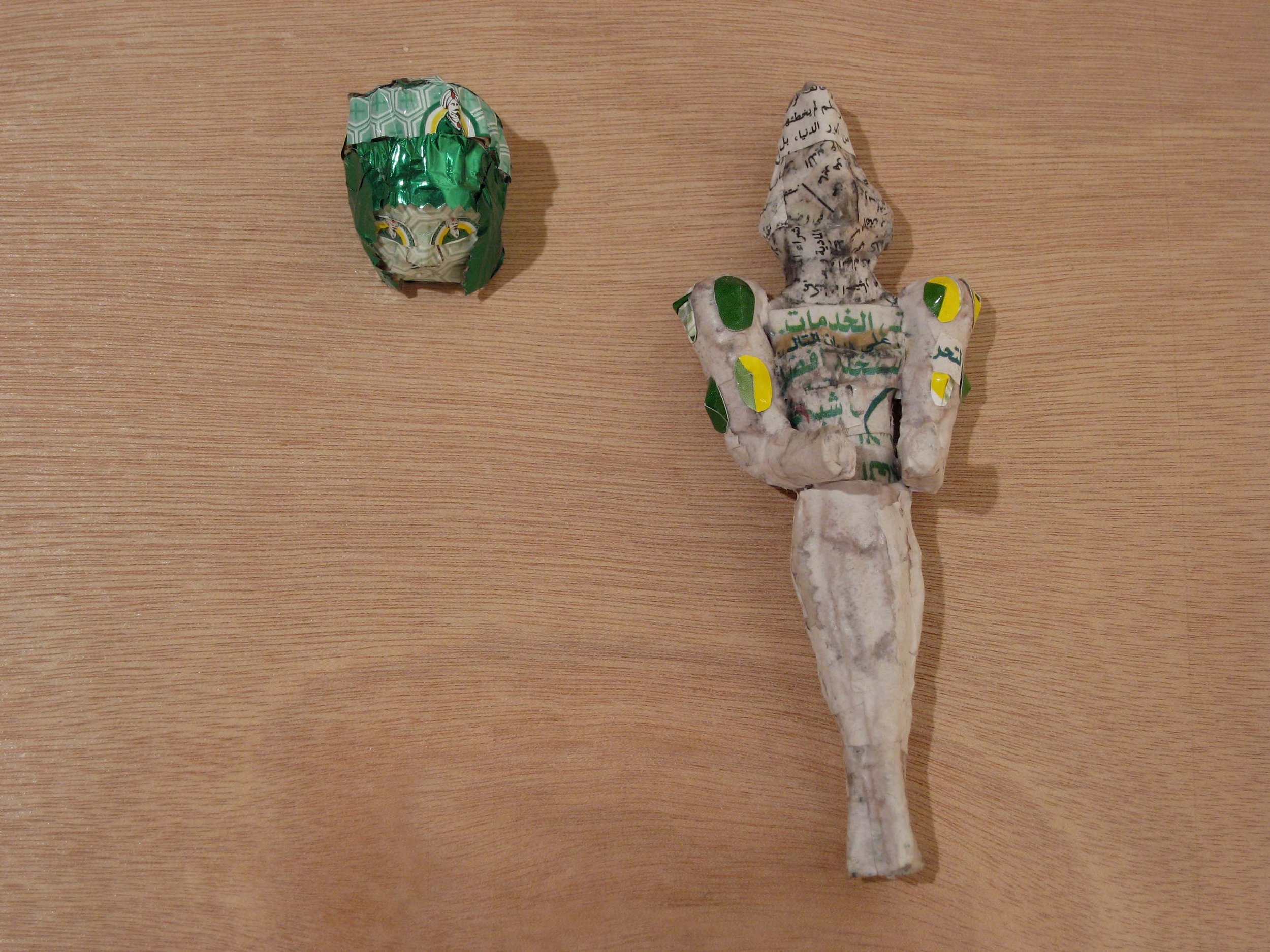
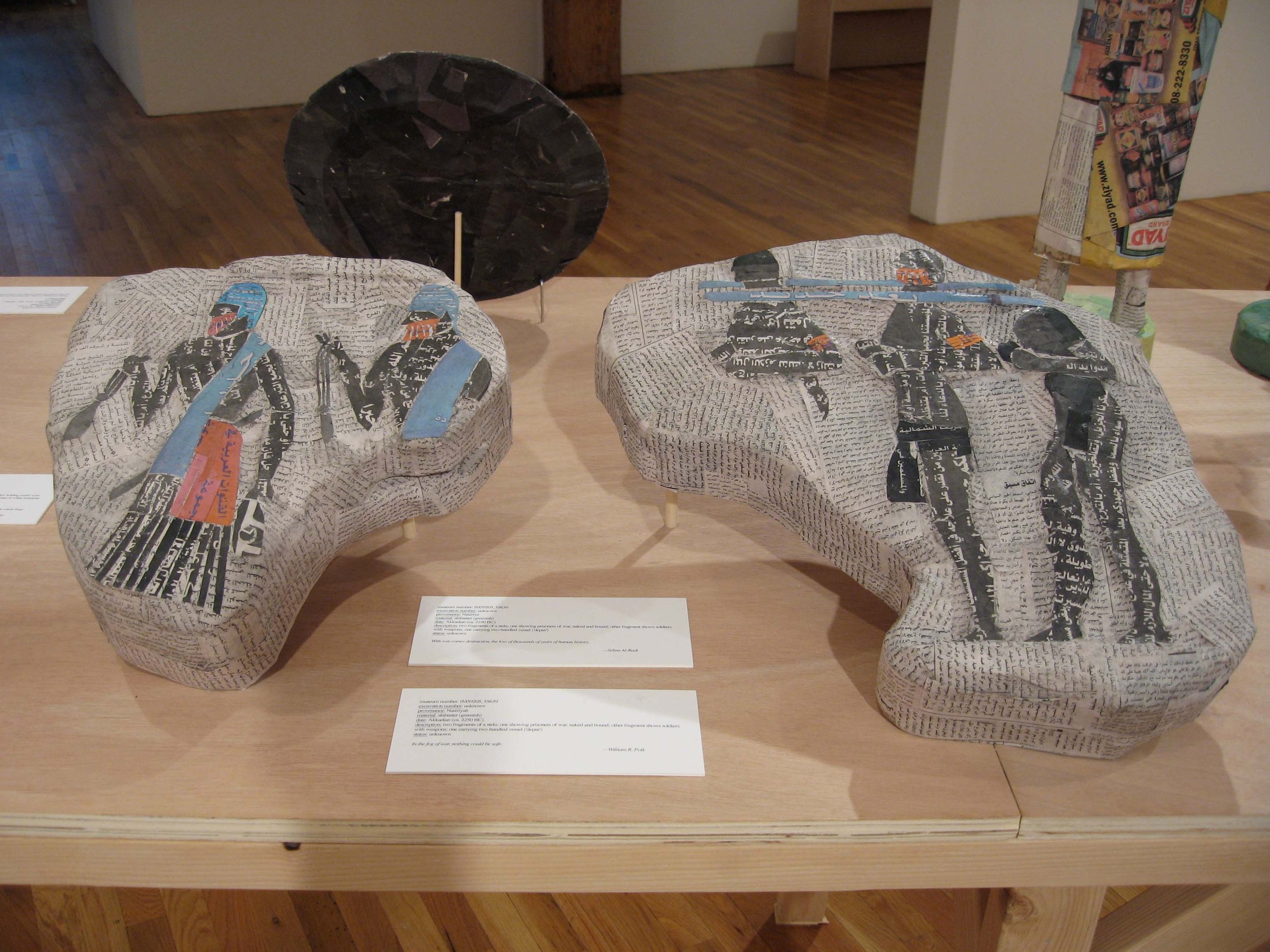
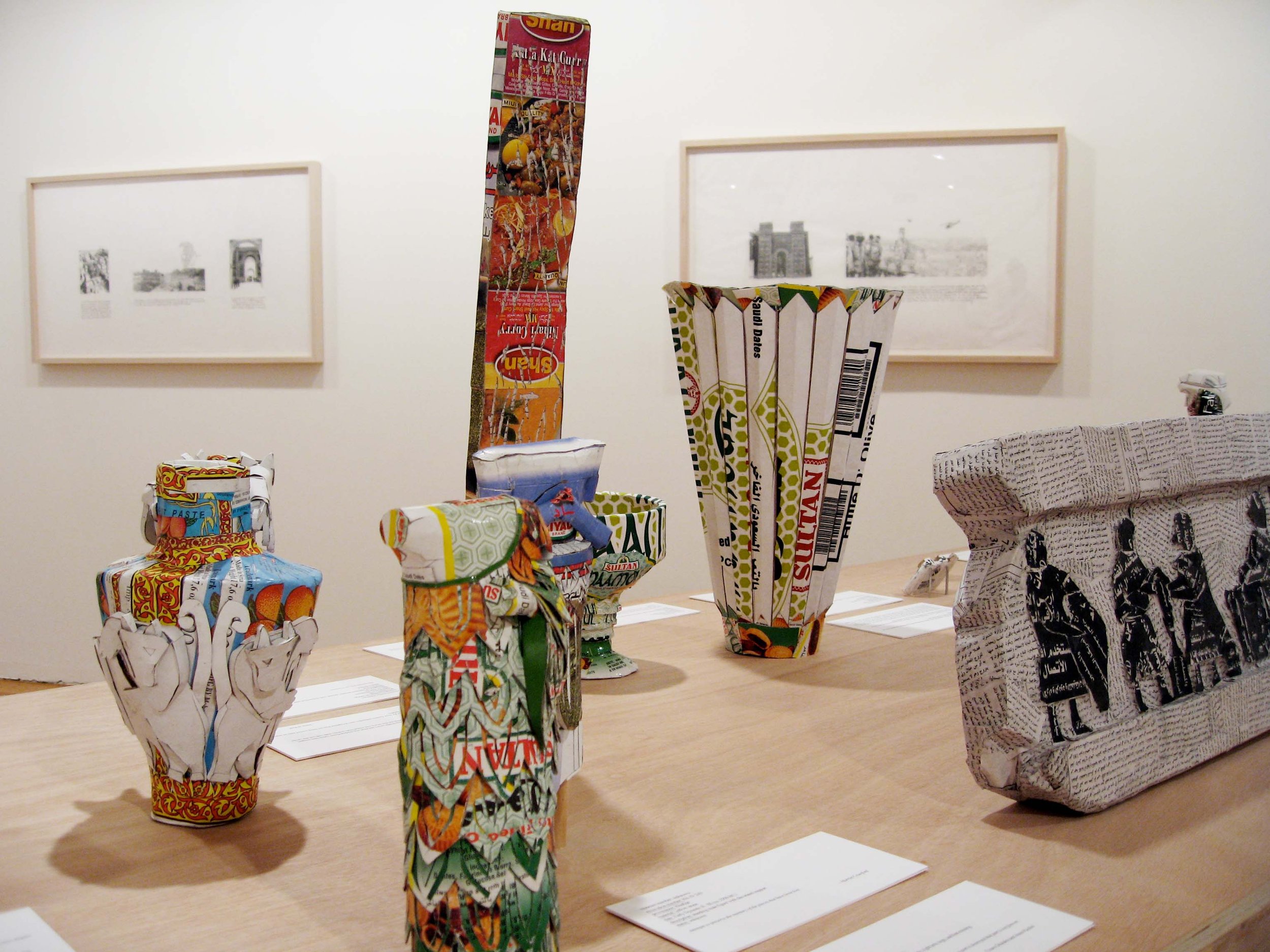

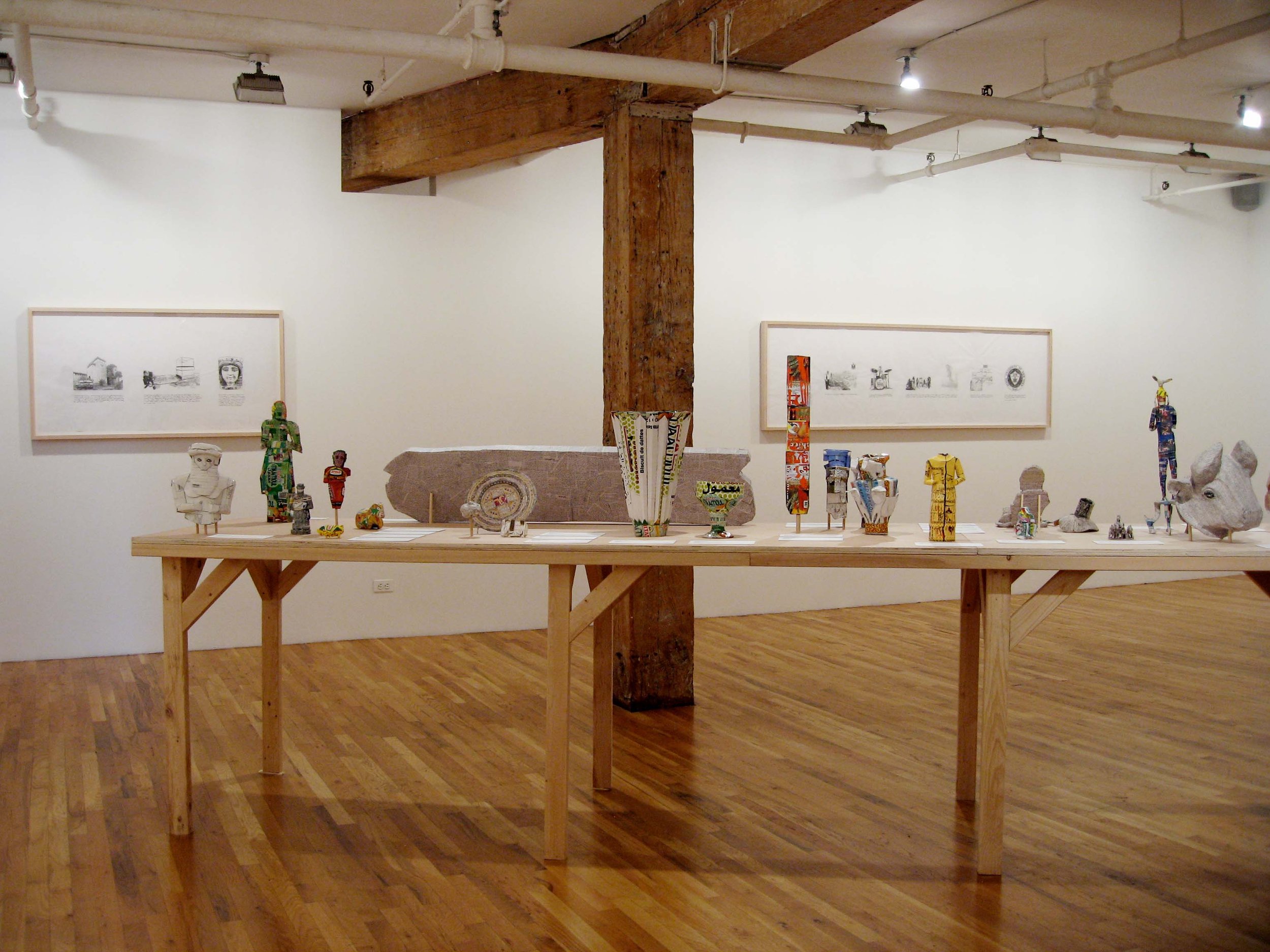
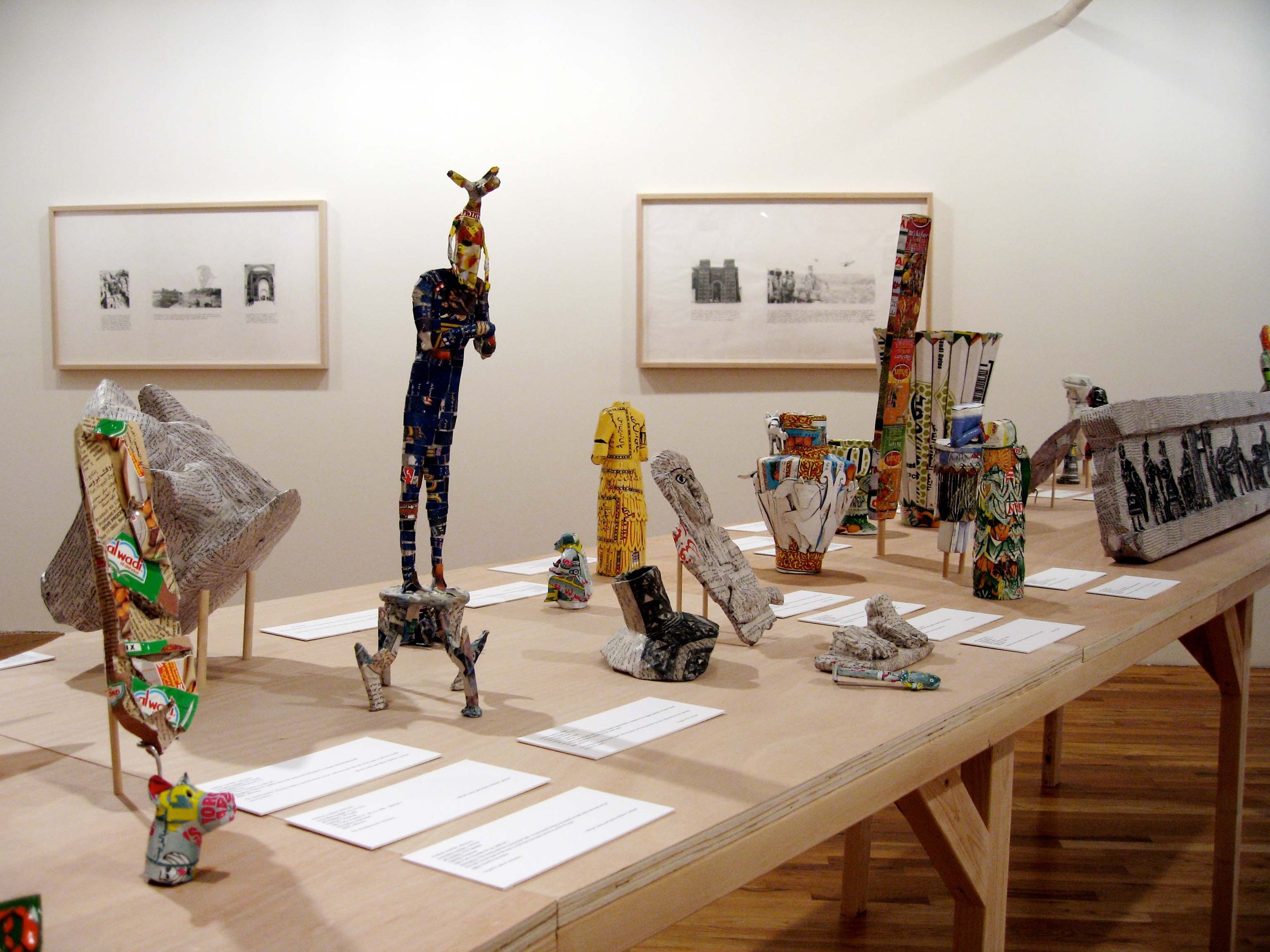

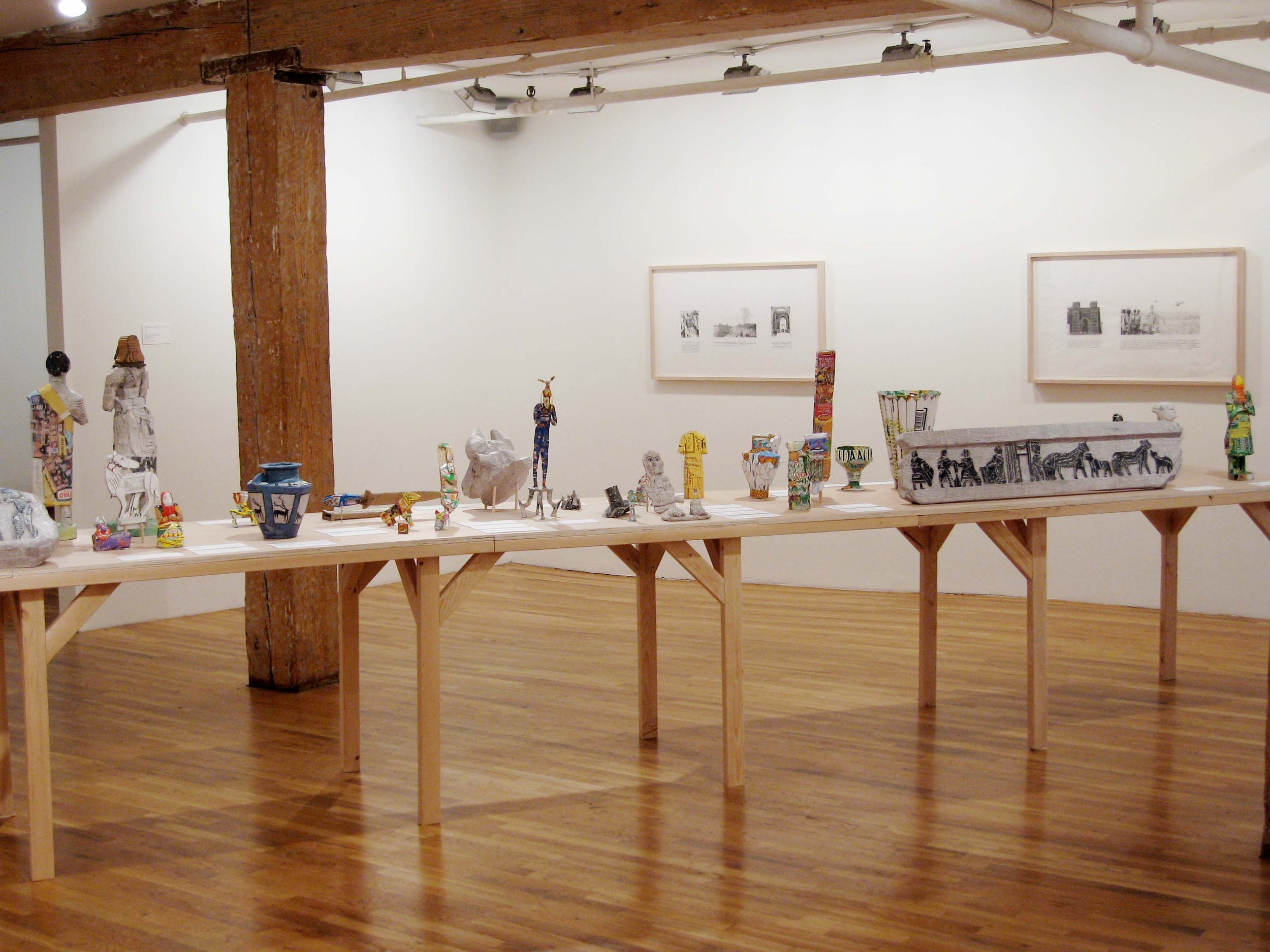
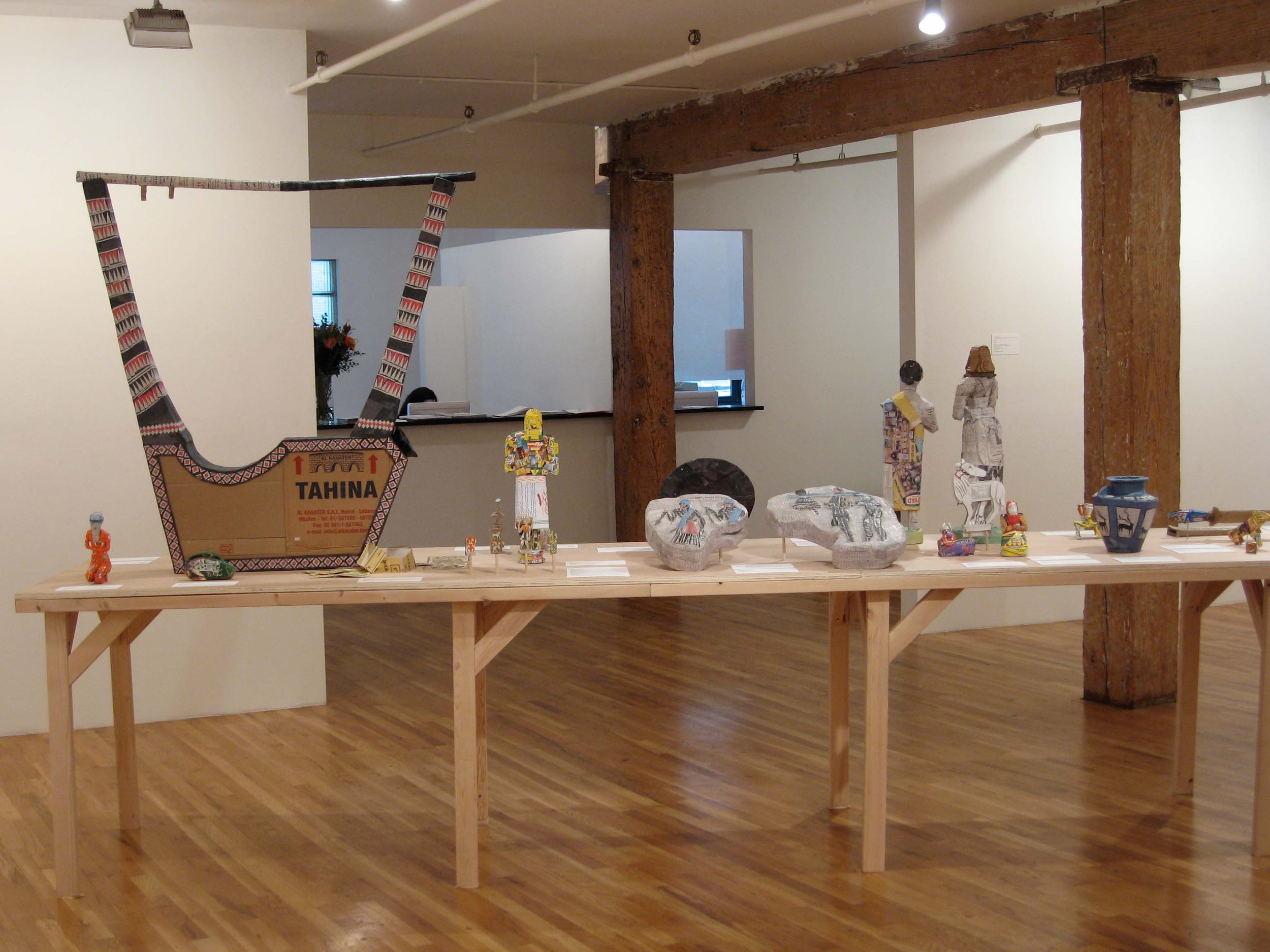
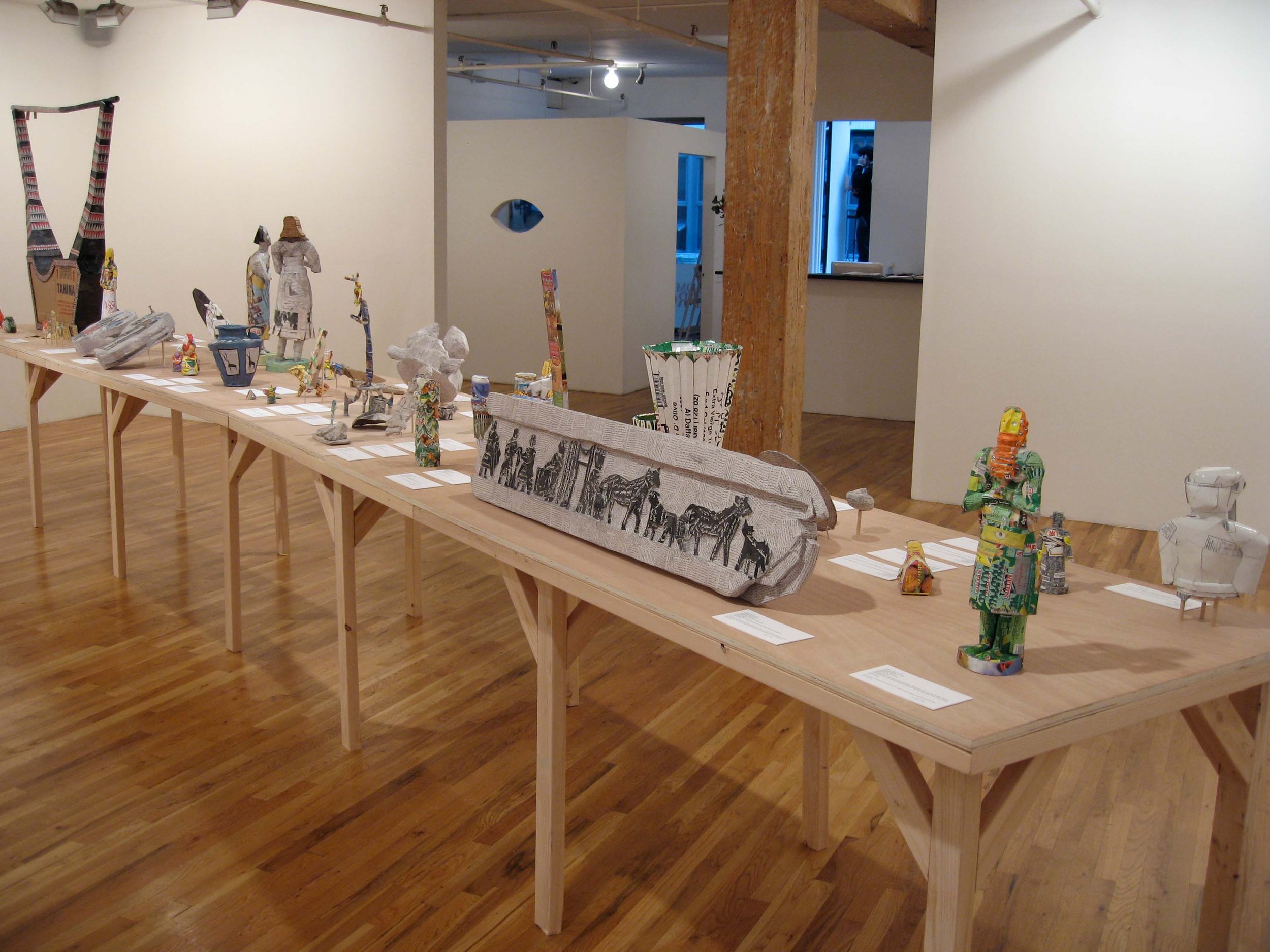
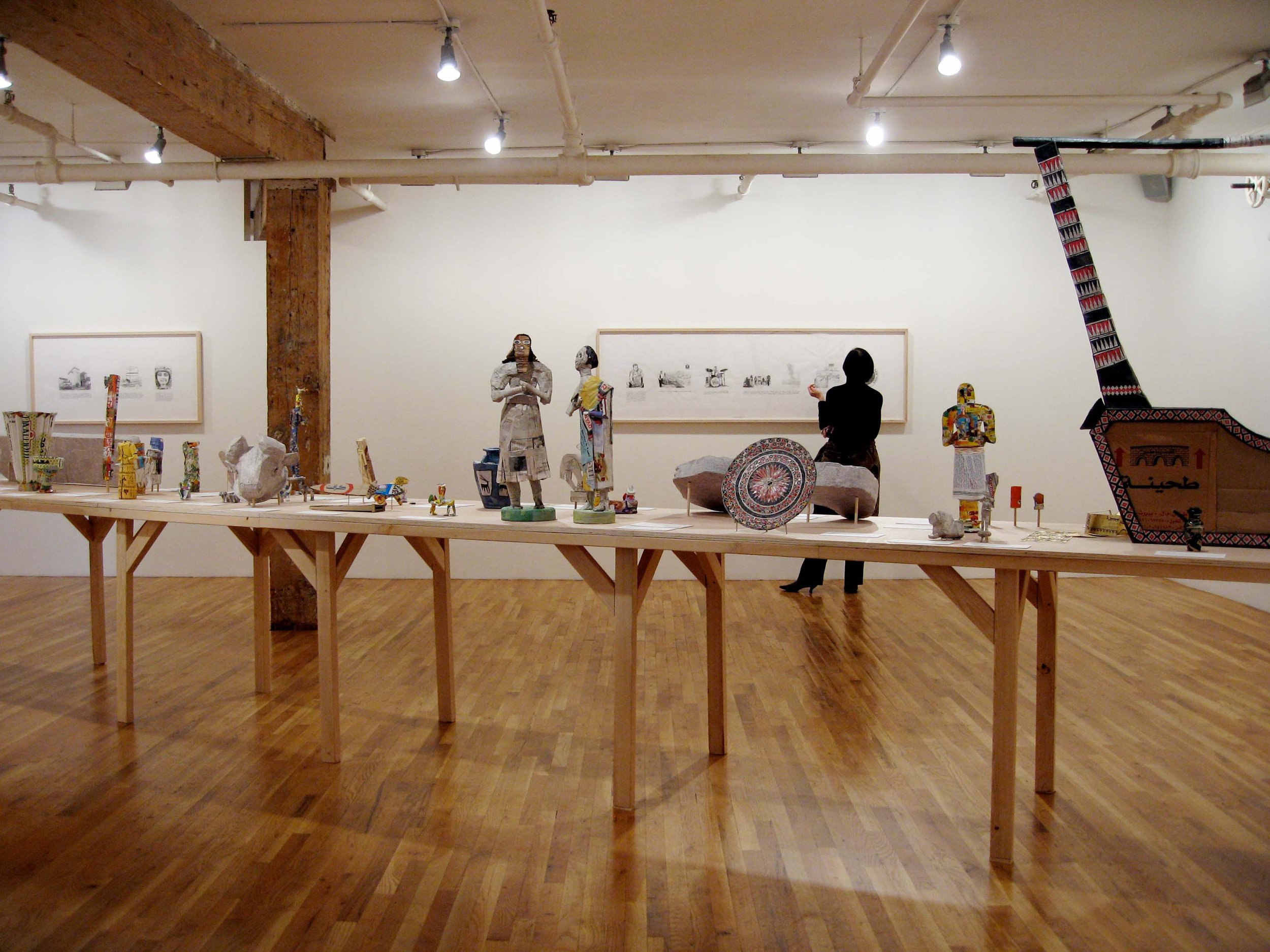
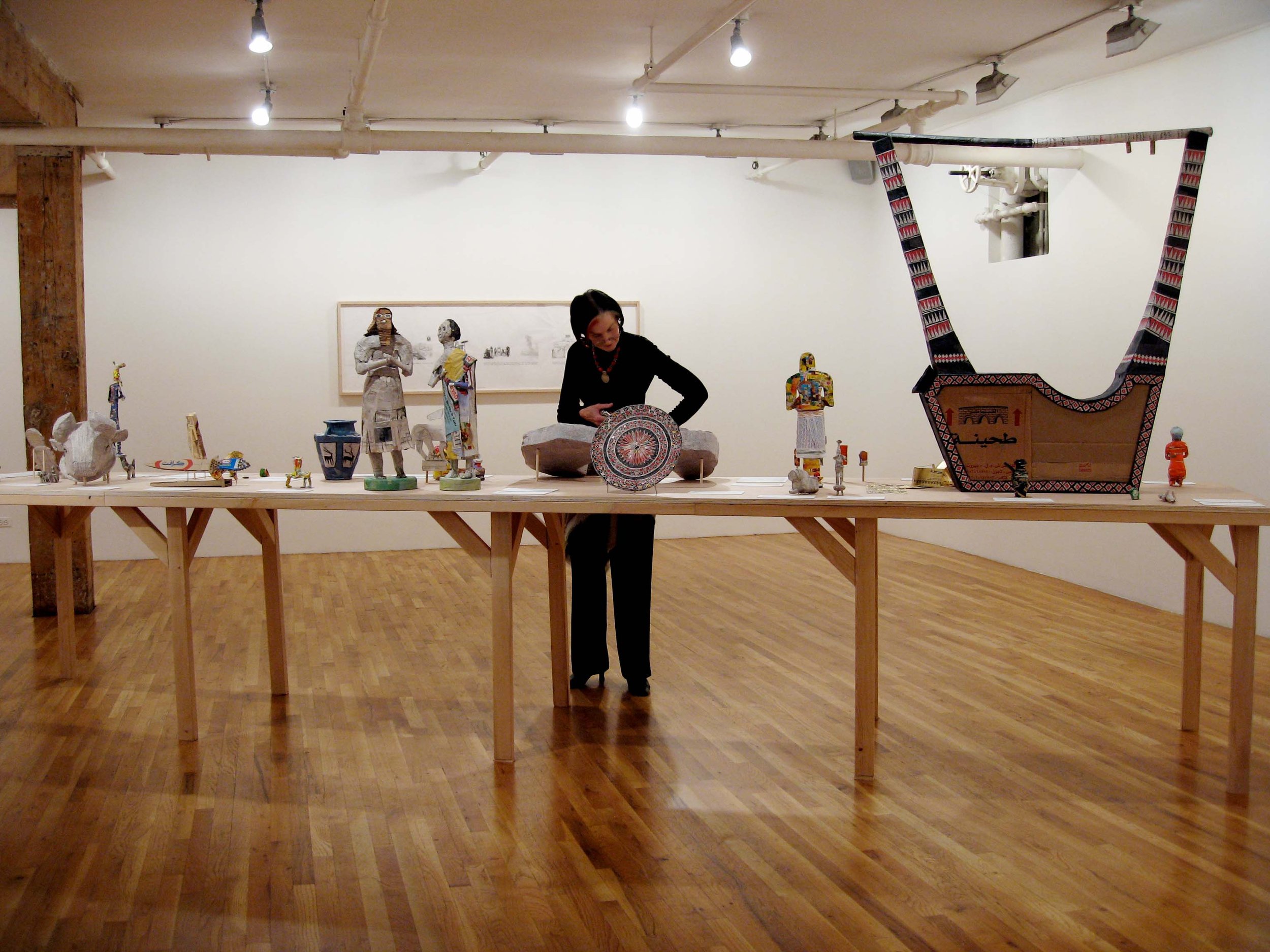
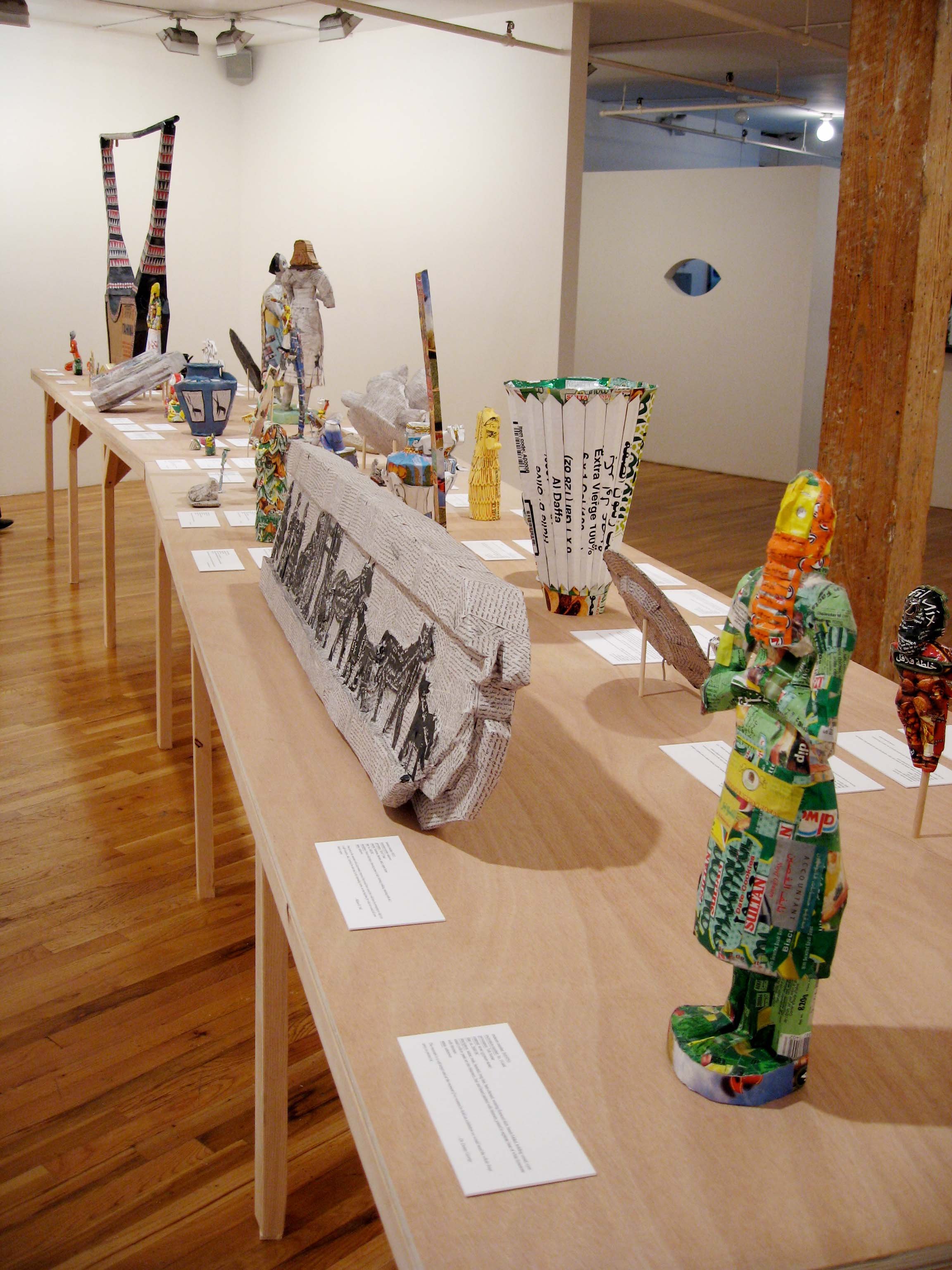
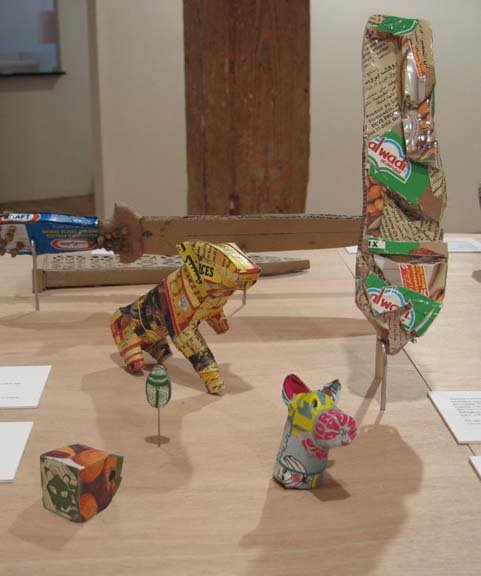
Lombard-Freid Projects is pleased to present The invisible enemy should not exist, Michael Rakowitz’s most recent project, an attempt to reconstruct the archeological artifacts looted from the National Museum of Iraq in the aftermath of the American invasion in April 2003.
The title of the exhibition takes its name from the direct translation of Aj-ibur-shapu, the ancient Babylonian street that was used as a processional way and that ran through the Ishtar Gate. This magnificent blue tile gate, which was excavated in Iraq in 1902-1914 by German archeologist Robert Koldewey, is on permanent exhibition at the Pergamon Museum in Berlin. In the 1950s, the Iraqi government rebuilt the gate; close by stands a reconstruction of the ancient city of Babylon, created by Saddam Hussein as a monument to his own sovereignty. Today the reconstructed Ishtar Gate is the site most frequently photographed and posted on the Internet by US servicemen stationed in Iraq.
The invisible enemy should not exist unfolds as an intricate narrative based on extensive research about the artifacts stolen from the Museum, the current status of their whereabouts, and the series of events surrounding the invasion, the plundering and related protagonists.
Alluding to the implied invisibility of these artifacts—initial reports about their looting were inflated due to the “fog of war,” stated Museum officials—the reconstructions are made from the packaging of Middle Eastern foodstuffs and local Arabic newspapers, moments of cultural visibility found in cities across the United States. The objects were created together with a team of assistants using the University of Chicago’s Oriental Institute database, as well as information posted on Interpol’s website. This exhibition represents the incipient stage of an ongoing commitment to recuperate the over 7,000 objects that remain missing.
Serving as a display structure for the recreated artifacts, Rakowitz has designed a long continuous table, whose shape derives from the measurements and layout of the Processional Way.
A series of episodic drawings punctuate the installation. The drawings reveal a narrative that includes the story of Dr. Donny George, former President of the Iraq State Board of Antiquities and Heritage and Director General of the National Museum in Baghdad, who worked tirelessly to recover looted artifacts.
Under Saddam Hussein, Dr. George worked at archeological sites to avoid Ba’ath Party meetings and also sidelined as a drummer in a band called 99%, which specialized in covers of Deep Purple songs. A version of their “Smoke on the Water,” recorded especially for this project by the New York-based Arabic band Ayyoub, becomes the sound background for the show. The original lyrics recall a disastrous fire during a Frank Zappa concert at a Swiss casino, in which the entire building was destroyed. After threats to his family, Dr. George resigned his post, fleeing to Syria in August 2006. He arrived recently in the US as a Visiting Professor in the Department of Anthropology at SUNY Stony Brook.
Michael Rakowitz’s recent exhibitions include Return, a project in which he resurrected his Iraqi grandfather’s import-export business in order to bring Iraqi dates to the US—the first such shipment in over 25 years. The shop was located on Atlantic Avenue in Brooklyn in the heart of New York City’s Arab community. The project was presented by Creative Time as part of its Who Cares initiative. Rakowitz’s upcoming exhibitions include the Sharjah Biennial 8 and the Istanbul Biennial.